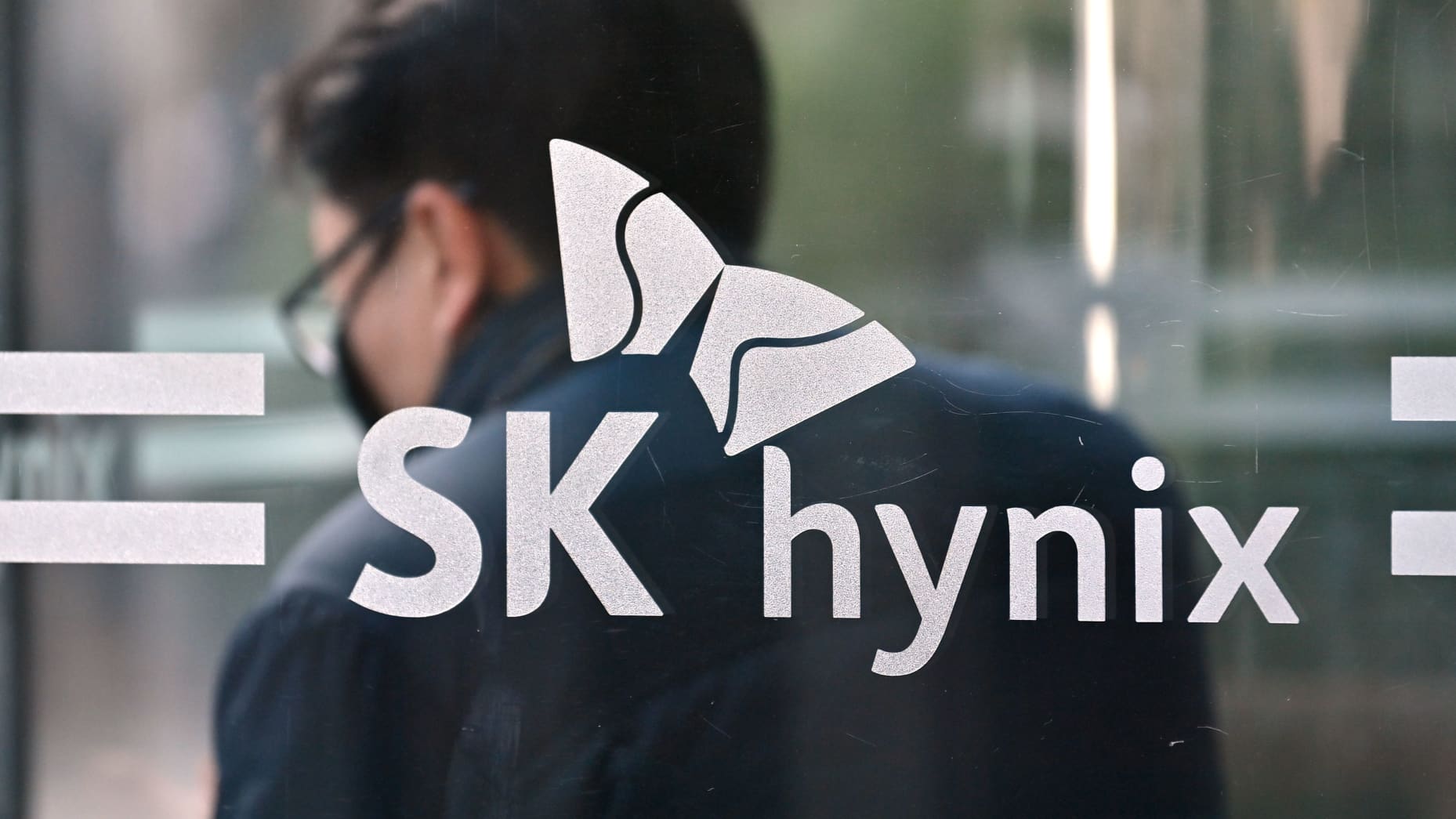SK Hynix moves closer to mass production of next‑gen HBM4, signalling a clear lead in AI memory and igniting a rally in its shares. The South Korean memory chipmaker announced that it has completed internal validation and quality assurance for HBM4 and is prepared to manufacture at scale. This milestone comes as HBM4 doubles the bandwidth of the previous generation while delivering a notable boost in power efficiency, positioning SK Hynix to serve Nvidia and other AI-focused customers with a memory solution designed for demanding data-center workloads. The company highlighted that samples had already been shipped earlier in the year to customers as part of its push to outpace rivals Samsung Electronics and Micron Technologies. Investors greeted the news with enthusiasm, as SK Hynix’s stock climbed, reflecting optimism about a potentially dominant position in the HBM market in the coming years.
HBM4 Development Milestone
HBM4 represents the sixth generation of high-bandwidth memory technology, a specialized DRAM format optimized for rapid data processing and exceptionally high memory bandwidth. Unlike conventional DRAM used broadly in PCs, workstations, and servers, HBM is engineered for stacked memory configurations that reside close to processing units, reducing latency and increasing throughput. This makes HBM particularly well-suited to artificial intelligence computing, where large models and data sets demand rapid access to memory. SK Hynix has framed HBM4 as a pivotal step forward, with internal validation checks confirming that the design meets stringent quality and performance criteria. By validating the product in-house, the company aims to accelerate adoption timelines and minimize potential manufacturing bottlenecks that could delay large-scale production.
SK Hynix’s latest generation, HBM4, is designed to deliver a substantial performance leap over HBM3 and earlier variants. The company asserts that HBM4 doubles the effective bandwidth compared with its predecessor, while also achieving a 40% improvement in power efficiency. These gains translate into faster AI inference and training cycles, enabling more complex models to run with lower energy consumption per operation. The implications for data centers are meaningful: higher performance memory that consumes less energy per operation can lower total cost of ownership and improve overall system efficiency in AI workloads. The emphasis on efficiency is particularly relevant given the growing emphasis on sustainable computing in hyperscale environments, where even modest gains in memory efficiency can accumulate into significant cost savings and environmental benefits over time.
The industry has been watching HBM4 developments closely because memory bandwidth remains a critical bottleneck in AI accelerators. HBM4’s expected role as a key memory component for Nvidia’s Rubin architecture—a next-generation AI chip intended for global data centers—adds another layer of strategic importance to SK Hynix’s announcement. Analysts believe that high-bandwidth memory is essential for Nvidia’s plans to scale AI workloads across large facilities, and SK Hynix’s readiness to manufacture HBM4 at scale signals continued alignment with Nvidia’s roadmap. In this context, HBM4’s performance edge is not just a technical milestone; it represents a potential shift in how quickly AI models can be trained and deployed in production environments, with consequences for customers across cloud providers and enterprise data centers.
Industry observers also note that HBM4’s leadership position could influence the broader competitive landscape. Samsung Electronics and Micron Technologies have pursued HBM4 development and have shipped samples to customers, signaling a race to secure Nvidia certification and customer validation. Samsung has reportedly been working to obtain Nvidia certification for its HBM4 chips, while Micron has already shipped HBM4 samples to select clients as part of its validation program. Despite these efforts by rivals, SK Hynix’s early validation success and progress toward large-scale production reinforce its leading position in the HBM space. The competitive dynamic remains fluid, but SK Hynix appears to be well positioned to capitalize on the growing demand for AI memory in the near term.
Analysts weigh in on SK Hynix’s trajectory in the HBM market. A prominent research director notes that SK Hynix has forged a commanding position in the HBM segment, a posture potentially reinforced by the company’s ability to deliver HBM4 at scale ahead of competitors. The analyst points to the strategic advantage of being Nvidia’s primary HBM supplier, especially as Nvidia transitions to more powerful Rubin-based AI accelerators and data-center deployments. While Samsung and Micron continue to invest aggressively in R&D and certification efforts, the consensus among several analysts is that SK Hynix could secure a substantial share of the HBM market—potentially approaching half by mid-decade—if HBM4’s production ramp proceeds smoothly and demand remains robust in AI data centers.
From an investor sentiment perspective, SK Hynix’s announcement delivered a notable stock surge. The company’s shares rose by more than 7% on the day of the announcement, marking their highest levels since 2000 and contributing to impressive year-to-date gains. The flux in stock price reflects expectations that HBM4 will translate into sustained revenue growth, given AI’s expansion and the critical role of memory bandwidth in accelerating AI workloads. In the broader market context, Samsung Electronics and Micron have experienced sizable stock gains in 2025 as well, though SK Hynix’s performance has stood out due to the perceived strategic edge in HBM technology and the potential to capitalize on Nvidia’s ongoing AI initiatives.
Financial results linked to HBM demand have underpinned SK Hynix’s recent momentum. In its June-quarter, the company reported record operating profit and revenue, driven in large part by strong demand for HBM products, which accounted for a large share of total revenues. The company’s market capitalization also rose significantly over the year, reflecting investor confidence in SK Hynix’s strategic positioning and growth prospects in the memory segment. As the company looks ahead, it anticipates continuing strong demand for HBM throughout the year, with expectations to double HBM sales for the full year versus 2024. Management projects sustained AI-related demand into 2026, reinforcing a long runway for HBM4 and related technologies in enterprise deployments, cloud infrastructure, and AI accelerator ecosystems.
In summary, SK Hynix’s readiness to mass-produce HBM4 marks a strategic milestone that could reshape the company’s competitive standing in AI memory. By delivering a product that doubles bandwidth and enhances energy efficiency, SK Hynix aims to meet the exacting requirements of AI data centers and Nvidia’s Rubin architecture. The milestone comes amid ongoing competitive efforts from Samsung and Micron, but early indicators—customer interest, validation progress, and production readiness—paint a picture of SK Hynix maintaining a leading role in the HBM market for the foreseeable future. If demand remains robust through 2025 and into 2026, HBM4 could help solidify SK Hynix’s position as a cornerstone supplier for high-performance AI compute environments, with meaningful implications for memory pricing, supply dynamics, and data-center design strategies.
Implications for Nvidia, Rubin, and AI Computing
Nvidia’s Rubin architecture is commonly cited as a major catalyst for demand in high-bandwidth memory. Analysts argue that Rubin’s design will require dense memory bandwidth to unlock its performance potential across large-scale data-center deployments. In this context, SK Hynix’s HBM4 could become an essential enabler of these advanced AI workloads, particularly for training and inference at scale. The memory bandwidth improvements offered by HBM4 translate into faster data movement between memory and processing units, a fundamental factor in reducing bottlenecks during AI model execution. As a result, data-center operators and cloud providers may seek to align their server configurations with HBM4-enabled platforms in order to maximize throughput while maintaining energy efficiency.
From a strategy standpoint, SK Hynix’s leadership in HBM4 supports its long‑term growth story in semiconductors, reinforcing the company’s role as a critical supplier for Nvidia and other AI accelerator developers. As AI workloads become more complex and deployment scales rise, memory suppliers with proven bandwidth and efficiency advantages may command favorable pricing and longer-term supply agreements. The strategic positioning also highlights the importance of advanced packaging and manufacturing capabilities to deliver high-volume, high-performance memory solutions. While the HBM market remains competitive, the momentum around HBM4 suggests that SK Hynix could set the pace for the next generation of AI memory technology, with ripple effects across the broader memory ecosystem.
Competitive Landscape and Customer Relationships
Competition among SK Hynix, Samsung, and Micron has intensified as each company advances its HBM offerings and seeks Nvidia certification for its chips. SK Hynix’s early progress, coupled with customer validation and readiness to scale production, differentiates it within the sector. Samsung and Micron are advancing in parallel, with shipments and certification activities that aim to close gaps in market share and secure long-term AI memory demand. The landscape remains dynamic, with Nvidia’s selection of HBM suppliers influencing the competitive balance and shaping how data centers are architected to optimize AI workloads. In the near term, SK Hynix’s emphasis on performance improvements, energy efficiency, and ready-for-scale production could translate into accelerated adoption in the data-center ecosystem.
Analysts also emphasize the potential market share implications if HBM4 achieves broad adoption. While exact market share projections vary, one research director at a leading analytics firm suggested that SK Hynix could command roughly half of the HBM market by 2026, contingent on successful production ramp and continued AI demand. This prognosis underscores the strategic importance of supply security, capacity expansion, and manufacturing yield for HBM4. If SK Hynix sustains a leadership position, it could influence pricing dynamics and negotiation leverage within the AI memory market, benefiting its broader business beyond HBM sales while reinforcing Nvidia’s memory ecosystem with a reliable, high-performance supplier.
Competitive Landscape and Customer Relationships
Nvidia remains a central customer in SK Hynix’s HBM strategy, given the alleged alignment between HBM4’s capabilities and Nvidia’s Rubin architecture’s requirements. The Rubin platform’s performance ambitions rely on high-bandwidth memory to minimize latency and maximize throughput when processing large-scale AI models. As such, HBM4’s enhanced bandwidth and energy efficiency are positioned as key enablers for Nvidia’s continued leadership in AI compute. The extent of Nvidia’s demand for HBM4 is closely watched by investors and competitors alike because it influences production planning, price dynamics, and the pace at which HBM4 becomes a standard in next-generation AI accelerators.
Rivals continue to intensify their HBM programs. Samsung Electronics has reported progress in developing HBM4 solutions and pursuing Nvidia certification, a critical milestone for mass adoption in Nvidia-powered systems. Micron Technologies has likewise moved forward with HBM4 sample shipments to customers as part of its validation cycle, signaling a broader push to capture share in the AI memory market. Despite these efforts, SK Hynix’s early validation outcomes and its declared readiness for large-scale manufacturing suggest a strong competitive edge that could translate into a durable position in the HBM market as AI demand intensifies over the next several years.
The analyst community’s perspective on competitive dynamics remains nuanced. While SK Hynix holds a leading position, the path to market dominance is contingent on several factors beyond technology alone. Production yield, supply chain resilience, and the ability to scale manufacturing capacity to meet surging demand are critical. Additionally, Nvidia’s certification process for HBM4 with Samsung and Micron will influence which suppliers secure long-term contracts and how customers plan their AI infrastructure investments. The sector’s trajectory will likely hinge on a combination of technical performance, production efficiency, and strategic partnerships between memory suppliers and AI platform developers.
Market Reaction, Financial Outlook, and AI Demand
The market responded positively to SK Hynix’s HBM4 news, with the stock surging on the day of the announcement. The rally, driven by optimism about a scalable HBM4 rollout and a strengthened position in the AI memory market, underscores investor expectations that higher bandwidth memory will translate into meaningful revenue growth. The stock’s move to multi-decade highs reflects a belief that SK Hynix can leverage HBM4 to secure long-term demand tied to Nvidia’s Rubin architecture and broader AI data-center deployments. The performance of SK Hynix shares, alongside gains in Samsung Electronics and Micron in the same period, signals that AI memory remains a focal point for technology equities as investors seek exposure to AI-enabled semiconductor growth.
Financial data reinforce the narrative of growing demand for HBM products. SK Hynix reported record operating profit and revenue for its June-quarter, with HBM demand accounting for a substantial portion of total revenues. The company’s market capitalization has increased significantly since the start of the year, reflecting investor confidence in its strategic positioning and the expansion of AI memory capabilities. The guidance issued by the company suggests an expectation to double HBM sales for the full year 2025 versus 2024, with a continued outlook for AI-driven demand through 2026. This outlook aligns with broader AI adoption trends, as enterprises and cloud service providers scale AI workloads and require high-bandwidth memory to support increasingly sophisticated models and analyses.
Analysts project that AI-driven demand will sustain HBM momentum into 2026, driven by continued growth in data-center workloads, large-scale model training, and AI inference tasks. The anticipated expansion in HBM sales is tied to the broader AI ecosystem’s expansion, which includes more capable GPUs, advanced AI accelerators, and the growing need for memory bandwidth to keep pace with compute performance. If supply constraints ease and production scales smoothly, SK Hynix could benefit from higher ASPs and stronger volumes, reinforcing its position among the top memory suppliers. The broader market also watches whether Nvidia’s certification process accelerates for HBM4 across multiple suppliers, as this could influence memory pricing, contract dynamics, and the speed at which new AI accelerators reach full production in hyperscale environments.
AI, Data Centers, and Future Demand
AI workloads—spanning training, validation, and inference—are increasingly demanding in terms of memory bandwidth and energy efficiency. HBM4’s dual-bandwidth capabilities address these requirements, enabling more complex models to run with lower latency and reduced power per operation. Data centers planning to deploy next-generation AI pipelines will evaluate HBM4 as a core memory technology, given the potential to reduce overall system bottlenecks and to improve performance-per-watt metrics. The anticipated surge in demand for AI-enabled services globally suggests that HBM4 could become a standard component in the infrastructure of cloud providers and enterprise AI deployments. For SK Hynix, this strengthens a strategic narrative that ties memory leadership to AI compute leadership, reinforcing the company’s long-term growth trajectory.
In conclusion, SK Hynix’s readiness to mass-produce HBM4 marks a defining moment in the race to deliver high-bandwidth, energy-efficient memory for AI data centers. The company’s advancements bolster its position relative to Samsung and Micron, while strengthening its collaboration with Nvidia on Rubin-enabled AI platforms. As AI adoption accelerates and data centers expand, HBM4’s bandwidth and power efficiency advantages could translate into meaningful gains in market share, revenue, and profitability for SK Hynix. If the demand outlook remains favorable through 2026, HBM4 could play a pivotal role in shaping the next era of AI acceleration and data-center design, underscoring SK Hynix’s status as a central pillar of the AI memory ecosystem.
Conclusion
SK Hynix’s announcement that it has completed internal validation for HBM4 and stands ready to manufacture at scale underscores a pivotal moment in the race to advance AI memory technology. The improvements in bandwidth and power efficiency position HBM4 as a core enabler for Nvidia’s Rubin architecture, reinforcing SK Hynix’s leadership role in the HBM market. While Samsung Electronics and Micron continue to push their own HBM4 programs, the market reaction—strong stock gains, heightened investor optimism, and an improving revenue trajectory—reflects the anticipation that HBM4 will drive significant demand in AI data centers and enterprise AI deployments. The coming years will reveal how the competitive dynamics unfold as Nvidia certification processes progress and as data-center operators seek the highest levels of performance with the most efficient memory solutions.



